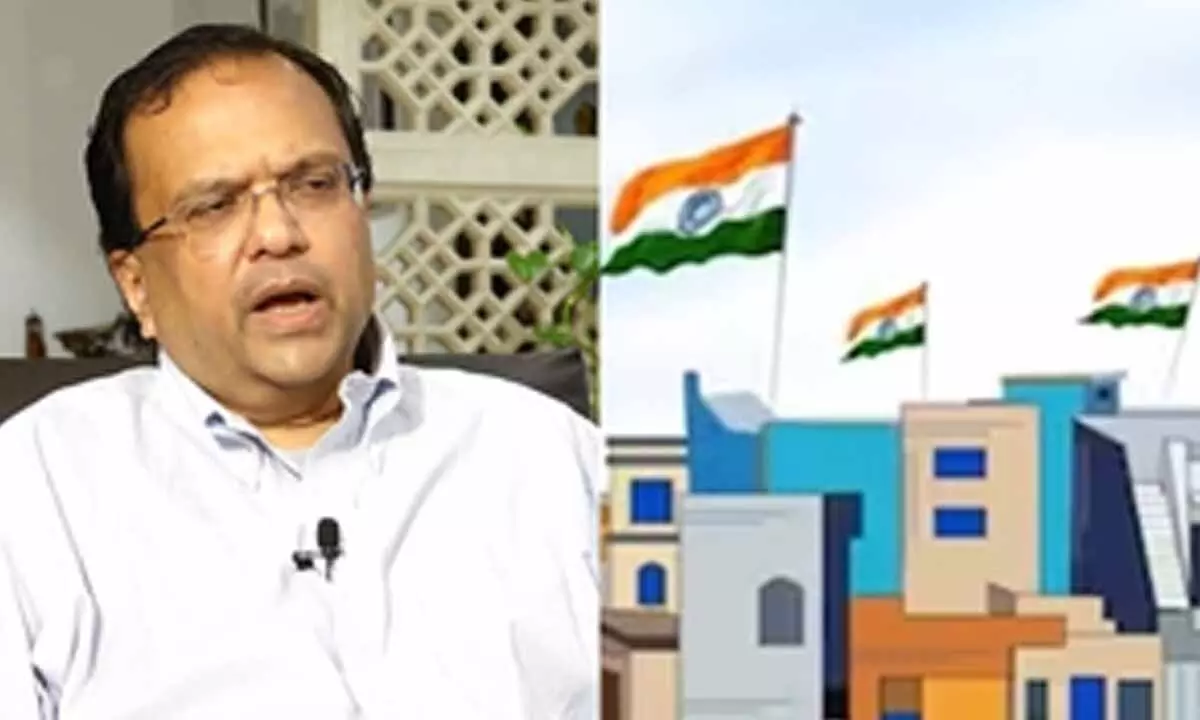How PM Modi's 'Har Ghar Tiranga' initiative gave rise to a new women-led industry, explains Culture Secy
Share :

The 'Har Ghar Tiranga' campaign, which kicked off in 2022 as part of the 'Azadi Ka Amrit Mahotsav', has ushered in a new women-led industry and today, women Self Help Groups (SHGs) have become the ‘backbone’ of the national flag production industry.
New Delhi: The 'Har Ghar Tiranga' campaign, which kicked off in 2022 as part of the 'Azadi Ka Amrit Mahotsav', has ushered in a new women-led industry and today, women Self Help Groups (SHGs) have become the ‘backbone’ of the national flag production industry.
Govind Mohan, the Union Culture Secretary, explains the journey of the Har Ghar Tiranga campaign and how it gave rise to the new women-led industry.
The campaign was envisioned by Prime Minister Narendra Modi as a 'Jan Andolan', urging citizens to hoist the national flag at their homes, workplaces and institutions to promote patriotism and unity. The campaign has become an annual tradition and is celebrated every year as part of Independence Day celebrations.
"While it evolved into a large people's movement, it also created new employment opportunities for thousands of women across the country. This initiative gave birth to an entirely new industry driven by women at the grassroots level, reducing reliance on large vendors. Today, Self-Help Groups (SHGs) have become the primary producers of the national flag," explains Govind Mohan, Secretary, Culture Ministry, which coordinates the campaign.
Govind Mohan further recalls that when the campaign was first launched in 2022, there was a significant challenge in meeting the demand for flags. To address this, the Central government procured national flags from large vendors and distributed approximately 7.5 crore flags to states, directly and through post offices. To further support the initiative, Prime Minister Modi initiated the revision of the Flag Code of India, enabling the involvement of various stakeholders in flag production, including women's SHGs.
"By the second year, the demand for Central government-supplied national flags significantly dropped to around 2.5 crore, as women’s SHGs increasingly took over the flag production. A notable example is Uttar Pradesh, which purchased 4.5 crore flags from the government in 2022 but did not buy any in 2023, thanks to the self-sufficiency of its SHGs in flag production," reveals Govind Mohan.
In 2024, the demand for Central government-supplied flags further decreased to just 20 lakhs, with SHGs becoming the primary producers.
Across India, approximately 25 crore flags are needed annually, one for every home. This shift from large vendors to SHGs has transformed these groups into a thriving industry. These SHGs now produce and sell flags for Rs 15-20 each, generating substantial earnings and creating jobs during the programme period. PM Modi's Har Ghar Tiranga campaign has not only ensured 'Jan Bhagidari' but also generated significant economic opportunities for women across the country.














